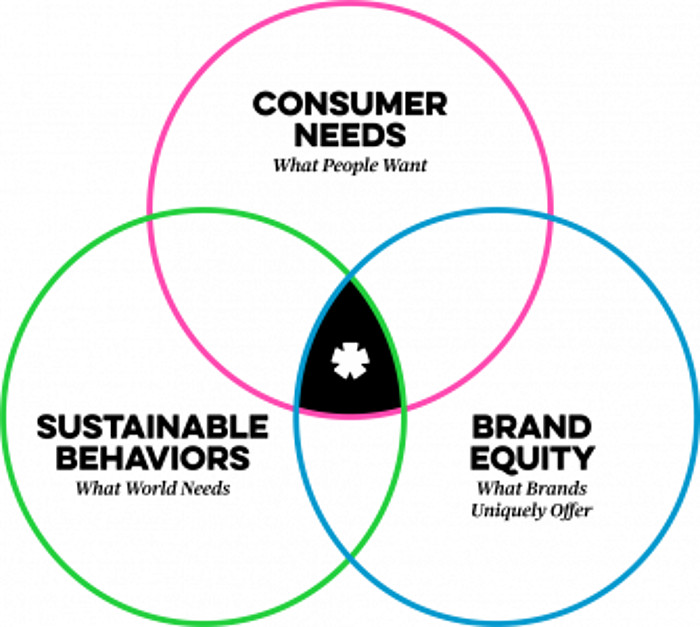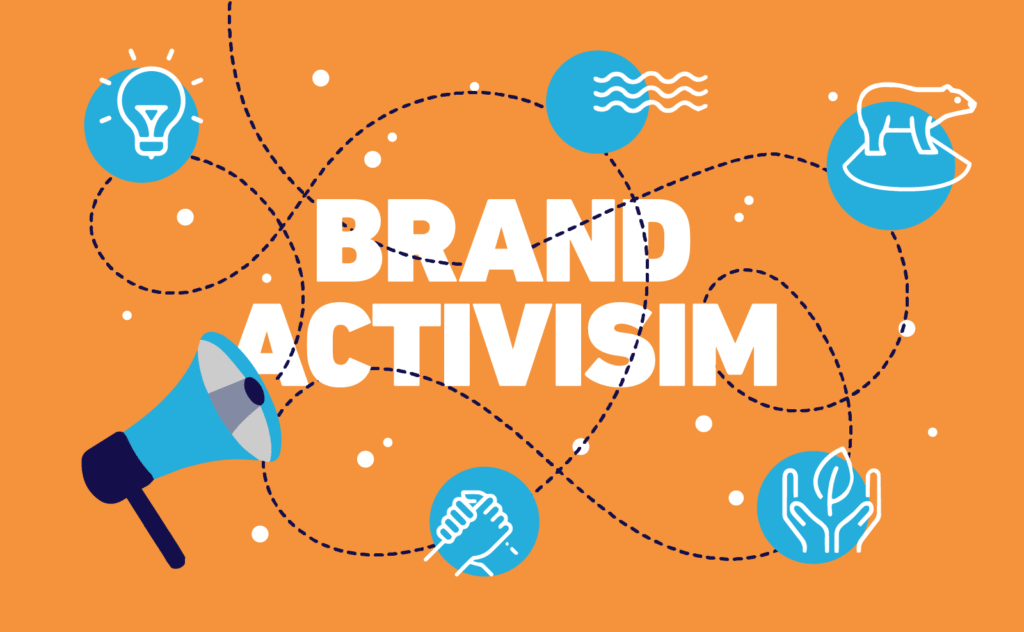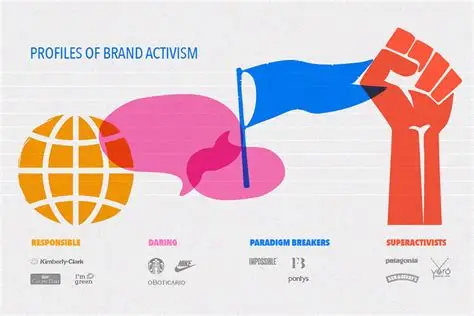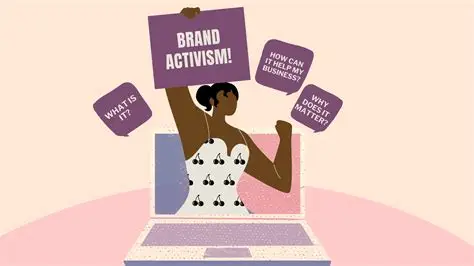Table of Contents
Introduction: A Shift in Expectations
Gone are the days when consumers bought products purely based on price, quality, or convenience. Today’s customers, especially Millennials and Gen Z, care deeply about the values behind a brand. They want to know:
- What does the brand stand for?
- What causes does it support?
- How does it contribute to society?
This shift has led to the rise of brand activism and socially responsible marketing—where brands take a stand on social, environmental, and political issues, not just for PR, but as a core part of their identity and mission.
What is Brand Activism?
Brand activism refers to a company’s public support (or opposition) to a cause with the intent to drive change—social, environmental, economic, or political. It goes beyond CSR (Corporate Social Responsibility) by being more vocal, action-driven, and emotionally resonant.

Types of Brand Activism:
- Social Activism: Supporting movements related to gender equality, LGBTQ+ rights, racial justice, etc.
- Environmental Activism: Advocating for sustainability, reducing carbon footprint, supporting eco-friendly initiatives.
- Economic Activism: Promoting fair wages, inclusive hiring, or challenging income inequality.
- Political Activism: Taking stances on government policies, elections, or global political issues.
- Legal Activism: Standing against unjust laws or supporting legal reforms.
What is Social Responsibility in Marketing?
Social responsibility in marketing refers to a brand’s efforts to do good while doing business. It includes practices like:
- Ethical sourcing and production
- Supporting local communities
- Ensuring diversity and inclusion
- Offering eco-conscious packaging
- Promoting mental health and wellness
This approach builds trust and loyalty among consumers, especially those seeking brands with purpose.

Why Brand Activism Matters in Today’s Market
1. Consumer Demand for Values
- 64% of consumers worldwide will buy from or boycott a brand solely because of its stance on a social or political issue (Edelman Trust Barometer).
- Gen Z prefers brands that are authentic, inclusive, and purpose-driven.
- People want to see action, not just words or hashtags.
2. Brand Differentiation in Saturated Markets
In a world overflowing with options, products alone no longer drive loyalty. Brands that connect emotionally and ethically stand out and foster stronger engagement.
3. Stronger Emotional Bonds
Consumers are more likely to remain loyal to brands that share their values. These emotional bonds create brand advocates, not just buyers.
4. Attracting and Retaining Talent
Employees want to work for companies that align with their beliefs. Brand activism attracts mission-driven talent, which in turn boosts internal culture and productivity.
Real-World Examples of Brand Activism & Responsibility
✅ Nike – “Believe in Something” Campaign (Colin Kaepernick)
Nike took a bold stand on racial justice by supporting NFL player Kaepernick’s protest. The campaign stirred controversy but also solidified Nike’s brand identity among younger, socially conscious consumers.
✅ Ben & Jerry’s – Ongoing Social Activism
The ice cream brand actively speaks out on climate justice, voting rights, refugee support, and more. Their actions match their words, making them a trusted voice in activism.
✅ Patagonia – Environmental Hero
Patagonia has donated millions to environmental causes, sued the U.S. government over public land issues, and even gave away the company to fight climate change.
✅ The Body Shop – Ethical Beauty
From cruelty-free products to campaigns for self-esteem and human rights, The Body Shop is a pioneer in ethical branding and community trade practices.

Risks of Brand Activism (and How to Avoid Them)
⚠️ Performative Activism
Saying you support a cause but not backing it with real action (e.g., posting a black square for #BlackLivesMatter but not reviewing internal diversity policies).
🔍 Solution: Be transparent, accountable, and take real action—even if it’s small at first.
⚠️ Backlash from Consumers
Not everyone will agree with your stand, and some campaigns may alienate certain customer segments.
🔍 Solution: Stay consistent with your core values and understand your target audience deeply. Be prepared to stand by your beliefs.
⚠️ Mismatched Actions and Values
If your supply chain harms the environment but you promote sustainability in ads, you’ll lose credibility.
🔍 Solution: Audit your operations to align internal practices with external messaging.
How to Implement Brand Activism and Responsibility Effectively
✅ 1. Define Your Core Values
- What does your brand stand for?
- What societal or environmental issues align naturally with your mission?
Use your mission statement as a starting point.
✅ 2. Start from Within
- Audit your hiring, operations, packaging, and partnerships.
- Make changes that reflect your values—internally first.
✅ 3. Engage in Honest Communication
- Share your journey, including your struggles and improvements.
- Transparency breeds trust.
✅ 4. Involve Your Audience
- Launch campaigns that allow customers to participate (e.g., donations, sharing their stories).
- Co-create content around the cause.
✅ 5. Build Long-Term Partnerships
Work with NGOs, social enterprises, or community groups that align with your goals.
✅ 6. Use Storytelling and Content Marketing
- Show the real faces behind your brand’s mission.
- Use videos, case studies, and blogs to humanize your cause.
✅ 7. Train Your Teams
Ensure your customer service, marketing, and sales teams understand your brand values and can speak about them authentically.

The Future of Brand Activism and Social Responsibility
As social media amplifies voices and customers demand more accountability, brand activism will become less optional and more expected. Brands will be judged not only by what they sell but also by what they stand for.
Technology (like blockchain for transparency), data analytics (for impact measurement), and collaborative marketing (with NGOs and communities) will drive the next phase of ethical branding.
The brands that lead this change won’t just win market share—they’ll shape culture, impact lives, and build brand legacies.
Conclusion: Purpose as a Competitive Advantage
In a world overflowing with noise, brands with purpose have clarity.
They don’t just sell—they inspire.
They don’t just profit—they give back.
They don’t just exist—they matter.
Brand activism and social responsibility are not trends; they are transformative forces. They demand courage, authenticity, and long-term commitment—but the rewards are immense: trust, loyalty, and relevance in a rapidly evolving marketplace.
If your brand wants to lead—not follow—then now is the time to take a stand. Not because it’s trendy, but because it’s right.
🟨 Frequently Asked Questions (FAQs)
Q1. What is brand activism?
A: Brand activism is when a company takes a stand on social, political, environmental, or economic issues that matter to its audience. It goes beyond selling products to express the brand’s values and beliefs.
Q2. Why is brand activism important in marketing today?
A: Today’s consumers, especially Millennials and Gen Z, expect brands to be socially conscious. Brand activism builds deeper emotional connections, enhances brand loyalty, and differentiates your brand in a crowded market.
Q3. How does social responsibility influence consumer behavior?
A: Consumers are more likely to support brands that align with their personal values. A brand that actively contributes to society or the environment is seen as more trustworthy and ethical, which can increase sales and brand advocacy.
Q4. Can taking a stand hurt a brand’s reputation?
A: Yes, if the activism appears inauthentic or opportunistic. Brands need to ensure their actions reflect their internal culture and long-term commitment. Superficial efforts or silence on key issues can lead to backlash.
Q5. What are some real-world examples of successful brand activism?
A:
- Nike – Supporting Colin Kaepernick and racial justice.
- Patagonia – Advocating for environmental causes.
- Ben & Jerry’s – Vocal about climate change, racial equity, and refugee rights.
Krishna bansal% – Content writer
Brand activism: Research trends and cluster analysis – ScienceDirect

Q6. What’s the difference between CSR and brand activism?
A: CSR (Corporate Social Responsibility) often involves long-term initiatives like sustainability and charity. Brand activism, on the other hand, is more public, bold, and often tied to current events or societal movements.
Q7. How can small businesses engage in brand activism?
A: Start by supporting local causes, practicing ethical sourcing, or standing for issues that resonate with your community. Transparency and consistency matter more than scale.